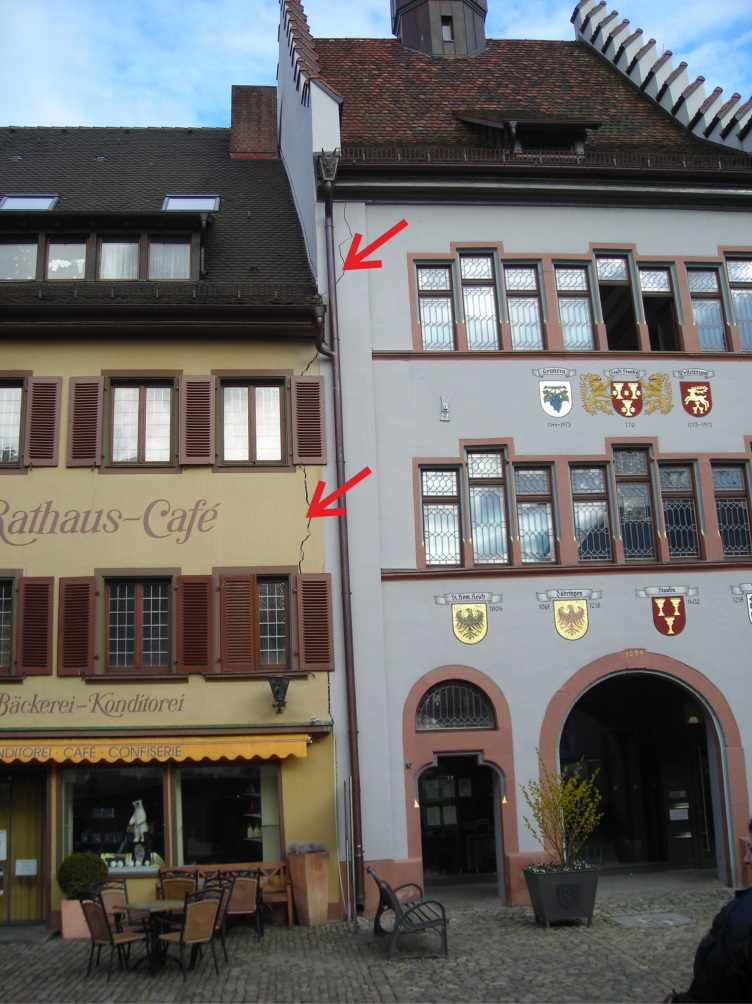Integrated hydrogeological and geochemical processes in swelling clay-sulfate rocks
- Contact:
Dr. Christoph Butscher (AGW)
- Project group:
Dr. Christoph Butscher, Prof. Dr. Philipp Blum, Dipl.-Ing. Thomas Mutschler, Daniel Schweizer
- Funding:
DFG, Funding No.: BU 2993/2-1
- Partner:
Dr. Henning Prommer, CSIRO Land and Water, Perth
- Start date:
01.09.2014
- End date:
31.08.2017
Summary
The swelling of clay-sulfate rocks often produces large problems in road and tunnel engineering in such rocks. Recently, the swelling problem arose also in a different setting: Geothermal drillings in clay-sulfate rocks triggered ground heave and dramatic damage to more than 250 houses in the town of Staufen. The processes involved in the swelling of clay-sulfate rocks are complex and not yet sufficiently understood. In particular, the hydraulic and geochemical processes in swelling zones, and how these change when affected by engineering activities, are largely unknown.
The main cause of the swelling is the transformation of anhydrite into gypsum in the presence of water, accompanied by a volume increase of up to 60%. This transformation takes place indirectly: first anhydrite dissolves; at the same time, the sulfate concentration of the pore water changes; the dissolved sulfate can be transported with groundwater flow; and finally gypsum precipitates. This progression of processes suggests that groundwater flow and pore water geochemistry play a key role in understanding the swelling processes. We hypothesize that changes in hydraulic conditions by human activities lead to geochemical changes in clay-sulfate rocks that cause the swelling. Therefore, the major aim of the project is the quantitative characterization of groundwater flow and chemical reactions in a swelling zone affected by human activities. In addition, the study aims at determining reaction rates of anhydrite dissolution and gypsum precipitation at the field scale, which may differ from reaction rates known from laboratory experiments.
In order to reach the project aims, the DFG-funded research investigates the role of the geological-structural framework; the hydrogeological and geochemical conditions in swelling zones and how these change after engineering activities (geothermal drillings); and the reaction kinetics in the system anhydrite-gypsum-water under field conditions. The work program involves 3D geological modeling, reactive transport modeling and model validation; with a focus on reactive transport modeling. Models are based on the case study of Staufen, which provides excellent data to develop the models; and compare model results with observed swelling phenomena. A forward modeling approach is applied with model adaptions in iterative loops to achieve an optimal match of modeled swelling phenomena with field data (model validation). The validated reactive transport models represent the geological, hydraulic and geochemical conditions that lead to rock swelling; and quantify the field-scale reaction kinetics capable to describe the evolution of anhydrite dissolution and gypsum precipitation in clay-sulfate rocks during swelling. The anticipated results of this ongoing research will lead to an enhanced understanding of the hydrogeological and geochemical processes in swelling clay-sulfate rocks.
